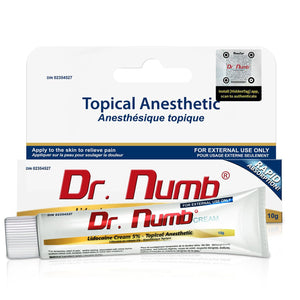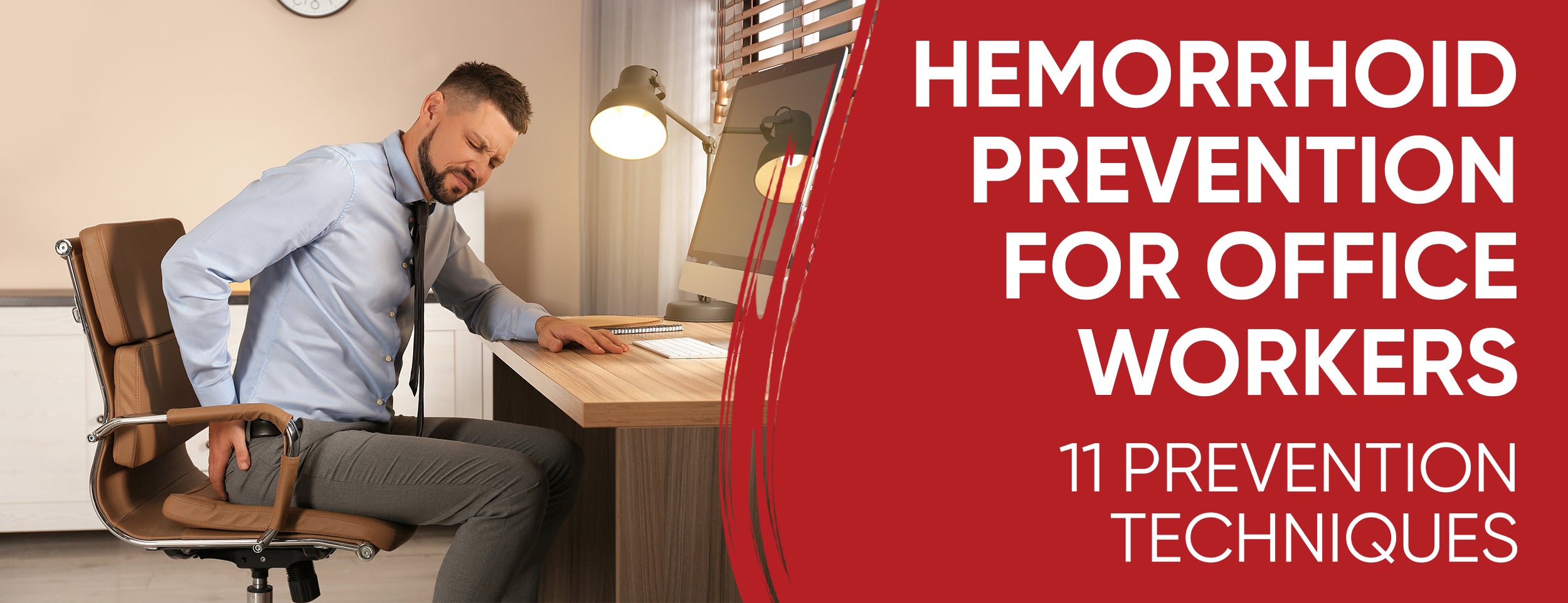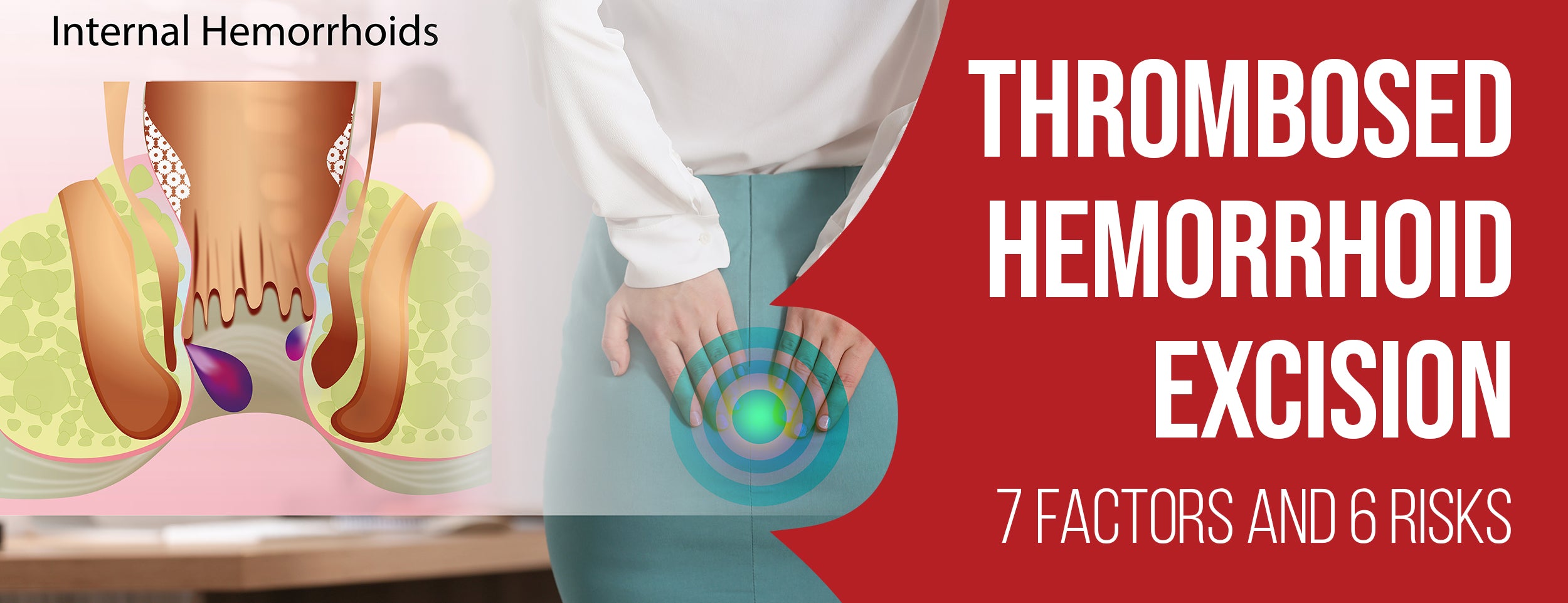Internal hemorrhoids can be hard to get rid of, whereas external hemorrhoids can easily be treated and diagnosed.
Getting rid of internal hemorrhoids involves a combination of lifestyle modifications, dietary changes, medications, home remedies, and in some cases, surgery.
Following the recommended measures can greatly alleviate the symptoms and ultimately get rid of internal hemorrhoids.
How to Get Rid of Internal Hemorrhoids: Treatment Guidelines

Dealing with internal hemorrhoids can be frustrating and painful. These are caused by straining during bowel movements, lack of fiber in the diet, or pregnancy. If left untreated, they can worsen, leading to bleeding, itching, and discomfort. There are effective ways to get rid of internal hemorrhoids.
Warm Bath or Sitz Bath:
Find relief from hemorrhoid discomfort with the therapeutic benefits of warm baths. Two types of baths, full and sitz, provide relief by reducing swelling, inflammation, and irritation around the affected area.
Full baths involve soaking your entire body in warm water, while sitz baths require sitting in warm water surrounding the sitz region. The heat from the water also increases circulation, reduces the size of hemorrhoids, relieves pain, and promotes healing. Aim for 15-20 minutes for a full bath and 10-15 minutes for a sitz bath, ensuring the water is comfortably warm but not too hot.
These simple remedies are effective alternatives to chemically loaded treatments. In addition to regular exercise, regular bathing can also help to prevent the occurrence of future incidents. Enjoy relief and promote healing with the therapeutic benefits of warm water.
Ointments:

Hemorrhoid ointments reduce inflammation, soothe the affected area, and protect the skin from further irritation. An ointment typically contains anti-inflammatory, analgesic, or astringent ingredients, such as hydrocortisone, lidocaine, or witch hazel.
Hydrocortisone is a corticosteroid that helps reduce inflammation, itching, and swelling. Lidocaine is a local anesthetic that helps numb the area, providing instant pain relief. Witch hazel is a natural astringent that helps reduce swelling and inflammation, tighten the skin, and promote healing.
One of the advantages of using an ointment for hemorrhoids is that it delivers fast and targeted relief. Unlike oral medications, which must be metabolized in the gastrointestinal system, ointments work locally and directly on the affected area. This allows for quick symptom relief, especially for conditions that cause discomfort, such as hemorrhoids.

Soothing Wipes:
Using soothing wipes is one of the most effective ways to relieve hemorrhoid discomfort. These uniquely formulated wipes are made of soft, natural materials, including aloe vera, witch hazel, and chamomile, proven to have anti-inflammatory benefits.
Soothing Wipes are convenient to use and can be discreetly carried, making relief accessible anywhere. Use these wipes after every bowel movement or throughout the day to reduce irritation, inflammation, and discomfort. Moreover, keeping the infected area clean and hygienic with Soothing Wipes ensures faster healing and reduced infection risk.
Get instant relief from inflammation and discomfort caused by hemorrhoids. Don't let this condition limit you; take control of your hemorrhoids with Soothing Wipes today.
Cold Compress

Hemorrhoids can be treated with a cold compress, which reduces inflammation and relieves the area around them.
To make a cold compress for hemorrhoids, fill a clean, resealable bag with ice cubes or frozen peas. Wrap the bag in a clean towel, and then apply it to the affected area for 10-15 minutes. This can be repeated several times a day, as needed.
There are several benefits to using a cold compress for hemorrhoids. The first benefit is that it can reduce swelling and inflammation, providing immediate pain relief. A cold compress can also numb the area, providing further comfort.
Loose Clothing
Tight clothing can cause discomfort and worsen hemorrhoid symptoms. Instead, opt for loose clothing made of natural cotton or linen. These fabrics are gentle on the skin and reduce the risk of irritation. Synthetic materials should be avoided as they trap moisture and heat, exacerbating symptoms.
In addition to wearing loose clothing, practicing good hygiene habits is crucial for preventing further irritation. Gently clean the affected area after bowel movements and avoiding harsh soaps or vigorous wiping can go a long way in providing relief.
High-Fiber Diet:

A High-Fiber diet is a highly effective and popular method for getting rid of hemorrhoids. The key to this diet lies in its emphasis on increasing the intake of fiber-rich foods.
Fiber helps soften stool and regulate bowel movements, reducing straining during defecation, a major contributor to hemorrhoids.
Boost your health with fiber-rich foods. Enjoy whole grains, fruits, vegetables, beans, and legumes that satisfy hunger and keep your digestive system happy. Aim for a daily intake between 25-38 grams, and witness your overall health improve quickly.
Increase Your Physical Activity
Hemorrhoids can be a painful and uncomfortable experience, but there are effective ways to prevent and get rid of them. One simple and effective method is to increase your physical activity.
A sedentary lifestyle: prolonged sitting can cause swelling and inflammation in the anal area. Hemorrhoids can be prevented by exercising and improving circulation.
Walking: is one of the best exercises for preventing and treating hemorrhoids. Strengthens the buttocks and lower abdomen, and improves blood circulation. Start with a comfortable duration and intensity, gradually increasing it according to your stamina and convenience.
Swimming: is another great physical activity that can help alleviate hemorrhoid discomfort. It strengthens the muscles in your lower body, improves blood circulation, and relieves pain.
Toilet Habits:

If you're experiencing persistent symptoms or severe hemorrhoids, seek consultation from your healthcare provider. Hemorrhoids result from increased pressure on the veins in the anal and rectal area, often from straining during bowel movements, firm stools, or prolonged toilet seat use.
To prevent hemorrhoids, maintaining good toilet habits is crucial. Avoid straining during bowel movements, and use the bathroom when you feel the urge. By practicing these habits, you can prevent the occurrence of hemorrhoids and will be on your way to a healthier lifestyle.
Stool Softeners:
Several different types of stool softeners are available, both over-the-counter and prescription-strength. These include medications such as docusate sodium, mineral oil, and polyethylene glycol. If you have any questions about a stool softener's effects or side effects, ask your pharmacist or doctor.
Stool softeners can significantly improve symptoms of hemorrhoids, including pain, itching, and bleeding. Stomach softeners help reduce inflammation and promote healing by making stools easier to pass without causing further irritation. However, it's important to continue using them as directed by your healthcare provider to see the best results.
Keep Hydrated:

When you have hemorrhoids, you may experience pain, itching, and bleeding due to inflammation and irritation in the anal area. Staying hydrated can help manage these symptoms and prevent further discomfort.
Hydration significantly benefits softening stools, making bowel movements easier without strain, which can exacerbate hemorrhoids.
Drinking water is essential: other fluids from herbal teas, fresh fruits and vegetables, and broths can help increase your hydration levels. It's best to avoid beverages that can contribute to dehydration, such as alcohol and sugary drinks.
Besides preventing hemorrhoid symptoms, being well-hydrated contributes to healthy skin, digestion, and body temperature regulation, among other functions. Prioritizing hydration is an essential aspect of managing hemorrhoids and maintaining overall health and well-being.

Use Topical Treatments
Choosing the proper topical treatment is critical for effective healing. Witch hazel is a powerful ingredient well-known for its anti-inflammatory properties and ability to soothe irritated skin. Other safe and effective ingredients include hydrocortisone, lidocaine, and pramoxine.
Apply a small amount to the affected area to use a topical treatment. It is essential to follow hemorrhoid discomfort to avoid side effects or complications.
In addition to topical treatments, you can do many other things to prevent hemorrhoids from developing or returning. Eating a diet high in fiber, exercising regularly, and avoiding prolonged sitting or standing are all necessary steps toward a more comfortable and healthy life.
Rubber Band Ligation:

Trustworthy and effective, rubber band ligation is a non-surgical treatment that eliminates hemorrhoids. The procedure involves wrapping a rubber band around the hemorrhoids, causing them to fall off in about a week.
Before the procedure, follow our recommended instructions: stop taking blood thinners and switch to a liquid diet for 24 hours. During the process, we will also provide a bowel cleanser to minimize the risks of infection.
Our simple treatment starts with lying on your stomach while a doctor examines the issue with an anoscope. Depending on the severity of the problem, the doctor may place small rubber bands around the base of each hemorrhoid, eliminating them one by one.
Immediately after the procedure, mild pain or discomfort may be experienced, including mild bleeding. However, most individuals feel little to no pain and can continue their normal activities immediately afterward. With a 90% success rate, most patients only require one treatment.
Surgery:

Surgery is typically only considered a last resort if you suffer from hemorrhoids. There are two main surgical options for hemorrhoids: hemorrhoidectomy, which removes hemorrhoids, and hemorrhoidopexy, aka stapling, which repositions the hemorrhoidal tissue.
While surgical treatments can be effective, there are risks and complications, such as bleeding, infection, and difficulty passing stools.
- Thankfully, there are many non-surgical treatments available that can help alleviate symptoms and gradually get rid of hemorrhoids.
- Constipation caused by a low-fiber diet can exacerbate hemorrhoids. Drinking plenty of water and avoiding straining during bowel movements can help.
- Hydrocortisone creams, ointments, or suppositories can help reduce pain, itching, and swelling.
- Sitz baths can soothe the affected area and speed up healing.
- Soaking for 10-15 minutes in warm water can ease discomfort.
Remember that symptoms may take several weeks, or even months, to disappear completely. Often, it is helpful to use a combination of treatments to achieve the desired relief. Be sure to consult with a healthcare professional before starting any treatment plan.
Preparing for Surgery
A patient undergoing surgical treatment for internal hemorrhoids should inform their doctor of any pre-existing conditions, medications, or supplements they are taking. Before the surgery, they may also need to stop taking certain medications, such as blood thinners.
After surgery, patients may experience some pain and discomfort for several days. Pain relievers and sitz baths can help alleviate these symptoms. Patients should also take care to keep the surgical site clean and dry to prevent infection.
Risks and Complications
It is true that surgical procedures can effectively eliminate internal hemorrhoids, but they carry some risks and complications. Discussing these risks with the surgeon before undergoing the procedure is important.
Injection:
Injection treatment can quickly relieve moderate to severe hemorrhoid symptoms, like persistent pain, bleeding, and swelling. Outpatient procedures are usually painless and allow for a quick return home. However, remember that injections are not a cure for hemorrhoids.
To prevent the condition from returning, maintain a healthy lifestyle with high-fiber foods, hydration, and avoiding prolonged sitting or straining during bowel movements.
Additionally, injections may not be suitable for everyone and can be harmful to those with allergies or blood clotting disorders. Before considering the procedure, discuss the risks and benefits with a healthcare provider to ensure the best possible outcome.
Hemorrhoidectomy:

Hemorrhoids can be painful and disruptive, but a hemorrhoidectomy can provide relief. This surgical procedure removes both external and internal hemorrhoids. However, before considering a hemorrhoidectomy, there are essential factors to consider.
This is a major surgery with potential risks of bleeding and infection. Patients must be healthy and discuss all risks and benefits with their surgeon. The surgeon will remove hemorrhoidal tissue with a scalpel or laser during the procedure.
Following surgery, patients will experience a recovery period with possible pain and discomfort. Strictly following post-operative care instructions is crucial to a smooth recovery process.
Sclerotherapy:
Sclerotherapy is a safe and effective medical procedure that can be used to treat hemorrhoids. By injecting a solution into the hemorrhoids, the blood vessels inside are shrunk, leading to the shrinking and disappearance of the hemorrhoids.
Before considering sclerotherapy, it is essential to speak with a healthcare provider to ensure that it is an appropriate treatment for a specific case. Some individuals may not be good candidates for sclerotherapy due to medical complications or pre-existing conditions.
If sclerotherapy is appropriate, the procedure is done in a medical setting, and a local anesthetic is typically used along with the sclerosing agent to close the veins. The procedure is quick and relatively painless, with the patient experiencing mild discomfort during the injection.
Following the procedure, mild discomfort, pain, and bleeding may occur. However, these symptoms usually subside within a few days with medication and post-procedure care instructions.
Hemorrhoid Stapling:

Hemorrhoid stapling, also known as stapled hemorrhoidectomy or stapled hemorrhoidopexy, is an advanced option for treating internal hemorrhoids. Unlike traditional hemorrhoidectomy, the procedure uses a circular stapling device to remove excess tissue and reposition the remaining tissue.
Here's how it works: a small incision is made around the anus, and the stapling device is inserted into the rectum. The machine then removes a ring of unwanted tissue and creates a circular staple line, which secures the remaining tissue in its proper place.
The benefits of hemorrhoid stapling are numerous. Patients experience less postoperative pain, fewer wound infections, and a shorter hospital stay. Recovery time is also faster, with most people able to resume their daily routines within a week.
It's important to note that this procedure isn't appropriate for all cases of hemorrhoids. It's typically used for grade 2 and 3 hemorrhoids prolapsing or protruding but can still be manually reduced. Traditional hemorrhoidectomy may be necessary if your case is more severe - such as grade 4 hemorrhoids.
Coagulation or Cauterization:

Quickly shrink and seal hemorrhoids with cauterization or coagulation. This safe and effective procedure involves a small probe inserted into the anus that generates heat to coagulate blood vessels, reducing the size of hemorrhoids.
The process takes only a few minutes and produces minimal discomfort. Patients can resume their daily activities afterward, and complications are minimal. However, those with severe complications may require alternative treatments.
Early diagnosis and treatment of internal hemorrhoids are crucial to getting relief. See a doctor for a proper diagnosis and personalized care plan.
Maintain good health by eating fiber-rich foods, staying hydrated, and avoiding straining during bowel movements. Proper care can cure internal hemorrhoids. Don't wait to feel better - take the first step today!
Natural and Alternative Treatments for Internal Hemorrhoids

For those who prefer natural or alternative remedies for internal hemorrhoids, here are some options:
Herbal Supplements
Internal hemorrhoids can be treated effectively with horse chestnut. Look for capsules, creams, or ointments at your local pharmacy.
Anti-inflammatory agents relieve internal hemorrhoids. All of these remedies reduce swelling and discomfort and are readily available as teas, creams, and capsules.
Get relief from constipation and hemorrhoids with natural psyllium husk fiber! Choose from powder or capsule supplement options.

Regular Exercise
Prevent internal hemorrhoids from coming back by exercising regularly. Improving digestion and bowel movements through exercise lessens the pressure on the veins in the rectum. Learn more about how physical activity can keep hemorrhoids at bay.
Home Remedies

Soothe pain and inflammation caused by internal hemorrhoids with a simple 10 to 15-minute soak in warm water, otherwise known as a sitz bath. Applying a cold compress can also help reduce pain and inflammation.
Aloe vera gel, Applying aloe vera gel to the affected area can help soothe inflammation and reduce pain
Hemorrhoid Cream Internal Use
Intense discomfort and swelling are relieved by hemorrhoid cream. You can be more comfortable with this specialized cream containing anesthetic ingredients. The area must be cleansed with a bath, shower, or specially designed moist wipes. Apply the cream carefully using your fingers or applicator.
Hemorrhoids may indicate underlying medical conditions such as colon cancer or inflammatory bowel disease. In case of persisting symptoms, seek treatment. Hemorrhoid cream designed for internal use ensures proper healing and relieves discomfort.
Acupuncture And Other Alternative Therapies
Acupuncture has been shown to be effective in relieving pain associated with internal hemorrhoids. Meditation and yoga can also help alleviate hemorrhoid symptoms by reducing stress and promoting relaxation.
Tips for Preventing Recurrence

Internal hemorrhoids are a common yet painful health issue that can be prevented with a few simple lifestyle changes. Here are some ways to prevent it from recurring:
Maintaining a Healthy Lifestyle
One of the most effective ways to get rid of internal hemorrhoids is to maintain a healthy lifestyle. This involves making certain lifestyle changes, such as adopting a healthy diet and incorporating exercise into your daily routine.
Proper Bowel Habits
Establishing a regular bowel movement pattern and avoiding delayed movements can help prevent the recurrence of painful internal hemorrhoids. Straining during bowel movements should also be avoided to eliminate the risk of recurrence. Protect your health by establishing effective bowel habits today.
Developing Good Habits During Bowel Movements
Maintaining a healthy digestive system is crucial to overall wellness, starting with developing good bowel habits. Drinking enough water, eating fiber-rich foods, and regular exercise are vital practices that promote healthy bowel movements.
By incorporating these habits into your daily routine, you'll be on your way to improving your digestive health and overall well-being.
Avoid Straining

Straining during bowel movements can worsen the condition of internal hemorrhoids. Therefore, it is essential to avoid straining while passing stools. To do that, try to consume a fiber-rich diet, stay hydrated, and establish regular bowel habits.
Eliminate Internal Hemorrhoids with These Simple Steps
Eliminating internal hemorrhoids can be a challenging task for many people. However, managing these painful and uncomfortable inflammations is possible with the right approach and guidance. The article "Eliminate Internal Hemorrhoids with These Simple Steps" offers a step-by-step solution to help you overcome your hemorrhoid issues
Bleeding Internal Hemorrhoid Treatment:
The treatment of internal bleeding hemorrhoids is different from that of external hemorrhoids. Traditional therapies include dietary changes, increased water intake, and over-the-counter medication. In more severe cases, medical treatment options may include rubber band ligation or infrared coagulation. Surgery may be necessary in the most severe cases. Symptoms of bleeding internal hemorrhoids require medical attention.
Exercise, a high-fiber diet, and adequate hydration can help prevent hemorrhoids.

Internal Hemorrhoid Removal without Surgery:
Internal hemorrhoids are a common condition that causes discomfort, itching, and bleeding during bowel movements. Surgical intervention can help treat this condition, but it may not suit everyone. Sclerotherapy and Rubber Band Ligation are minimally invasive and effective ways to remove internal hemorrhoids. Symptoms can also be alleviated at home with fiber intake, hydration, and over-the-counter creams. Consult a healthcare professional to determine the best treatment options. People can improve their quality of life by getting rid of internal hemorrhoids.
Conclusion:
Internal hemorrhoids are a common health issue but are preventable and manageable. Hemorrhoids can be reduced with exercise, good bowel habits, and a healthy diet.
If you experience any symptoms, do not hesitate to seek medical help to avoid complications. Remember, prevention is always better than cure.
Take good care of your health and discuss any concerns with your healthcare provider.











![Precautions & 6 Steps to Draining Thrombosed Hemorrhoids [DIY]](http://drnumb.ca/cdn/shop/articles/Draining_Thrombosed_Hemorrhoid_Yourself__6_Steps_8_DIY_Tips_With_Precautions.jpg?v=1713931775)

